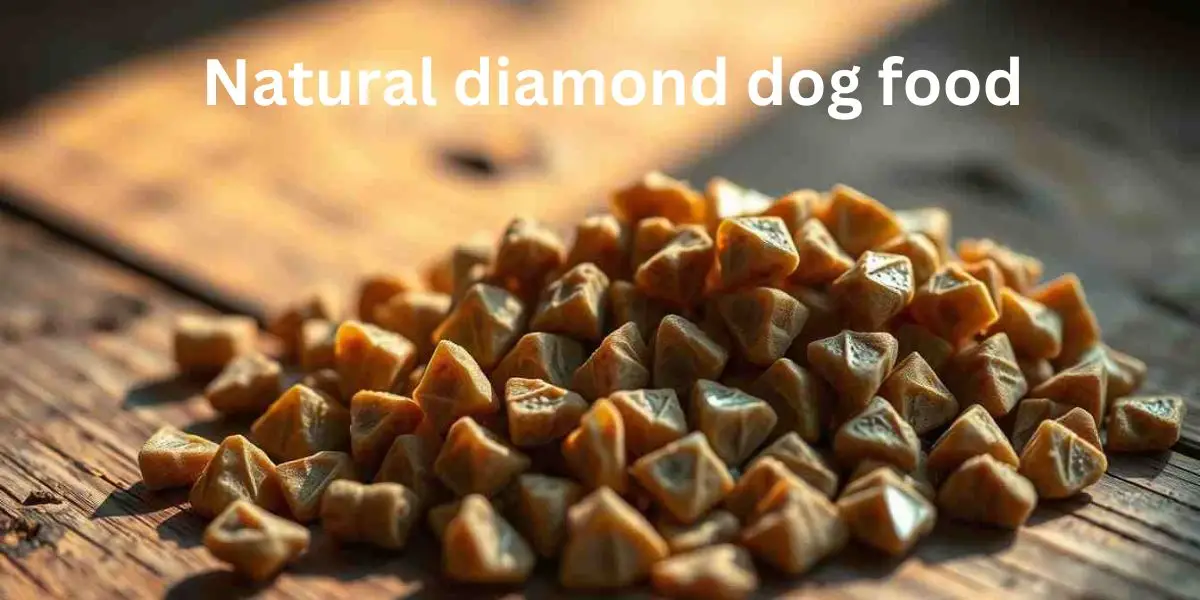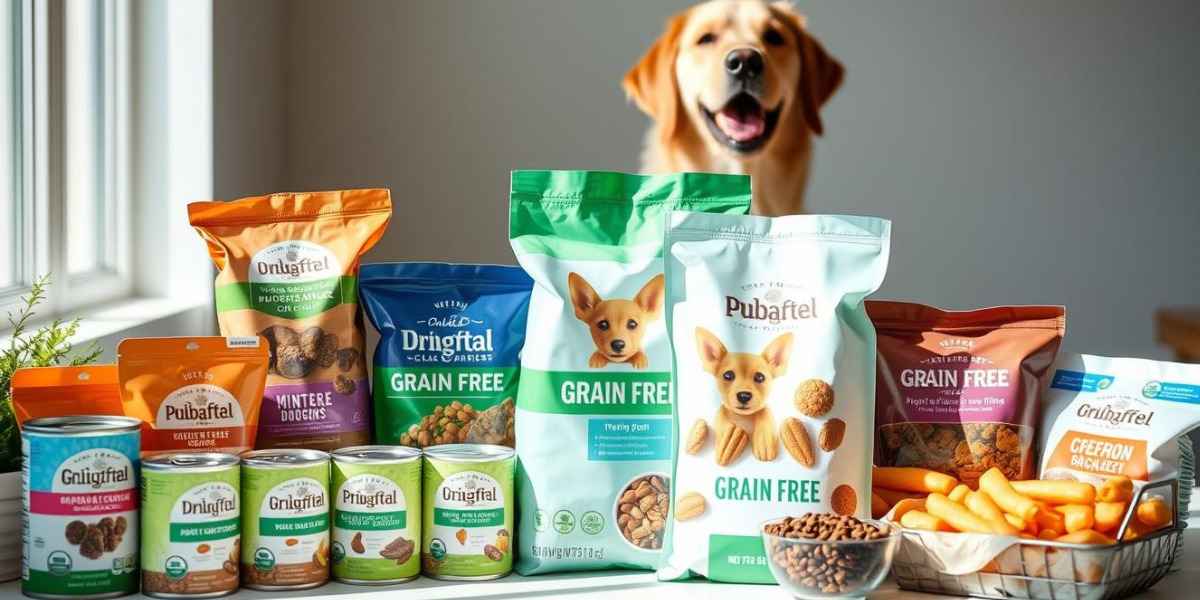If you’re looking for the best dog food with organ meat, omega-3, and prebiotics in the USA, you’re in the right place. This combination of high-quality proteins, essential fatty acids, and gut-friendly ingredients supports your dog’s digestion, immune system, and overall well-being.
Why Choose Dog Food with Organ Meat, Omega-3, and Prebiotics?
1. Organ Meat for High-Quality Protein & Nutrients
Organ meats like the liver, heart, and kidneys contain essential vitamins, minerals, and amino acids that support muscle growth, energy levels, and a shiny coat.
2. Omega-3 Fatty Acids for Joint & Brain Health
Omega-3s, commonly found in fish oil, flaxseed, and krill, help reduce inflammation, support cognitive function, and improve skin and coat health.
3. Prebiotics for a Healthy Gut
Prebiotics nourish beneficial gut bacteria, promoting better digestion, nutrient absorption, and a strong immune system.
How to Add More Omega-3 to Your Dog’s Diet
If your dog’s food lacks omega-3s, you can supplement with:
• Fish oil (salmon, sardine, or anchovy oil)
• Chia seeds or flaxseed
• Krill oil for better absorption
Also Read
Is Fish Oil a Probiotic or a Prebiotic?
Fish oil is not a probiotic or prebiotic, but it does support gut health by reducing inflammation and improving digestion. You can pair fish oil with a probiotic supplement for better gut balance and immune support.
Best Dog Food with Organ Meat, Omega-3 & Prebiotics in the USA
Here are some top-rated dog foods that include these powerhouse ingredients:
1. Brand A – Made with real organ meats, salmon oil, and inulin for gut health
2. Brand B – Grain-free formula with grass-fed beef liver, omega-3s, and prebiotics
3. Brand C – High-protein, nutrient-dense kibble with probiotics and omega-3-rich fish meal
Final Thoughts
A diet rich in organic meat, omega-3s, and prebiotics ensures your dog stays active, healthy, and full of life. Whether you choose a complete dog food formula or supplement with fish oil and probiotics, your pup will benefit from better digestion, stronger immunity, and improved skin and coat health.
Want to find the best dog food with these ingredients? Check customer reviews and look for high-quality, USA-made options to ensure top-notch nutrition for your furry friend!
How to Choose the Best Dog Food with Organ Meat, Omega-3, and Prebiotics in the USA
When selecting high-quality dog food, consider the following factors to ensure your pup gets balanced nutrition with the right ingredients.
1. Look for Real Organ Meat
Not all dog foods with organic meat are the same. Some brands use by-products, while others include real, high-quality organs like:
• Liver – Rich in iron, vitamins A & B, and essential amino acids.
• Heart – A great source of taurine, which supports heart and muscle function.
• Kidneys – Loaded with B vitamins, iron, and high-quality protein.
When checking the ingredient list, ensure organ meat is listed as a primary ingredient, not just as a vague “meat by-product.
2. Ensure a Good Source of Omega-3 Fatty Acids
Omega-3s reduce inflammation, promote healthy skin, and support brain function. The best sources of dog food include:
• Salmon oil
• Flaxseed
• Chia seeds
• Krill oil
Tip: Avoid dog foods that only mention “animal fat” or “fish meal” without specifying the source, as these may not provide enough omega-3.
3. Find Prebiotic Ingredients for Gut Health
Prebiotics help feed good bacteria in your dog’s gut, leading to better digestion and a stronger immune system. Some excellent prebiotic ingredients include:
• Chicory root (inulin)
• Pumpkin
• Sweet potatoes
• Apples
Bonus Tip: Many premium brands combine prebiotics and probiotics to further improve digestion.
Does Omega-3 Improve Digestion and Heal the Gut?
Yes! Omega-3 fatty acids have anti-inflammatory properties that can help with:
✔ Reducing bloating and discomfort
✔ Healing the gut lining
✔ Balancing gut bacteria
Dogs with food sensitivities, allergies, or digestive issues may benefit from omega-3-rich foods combined with prebiotics.
Can I Add Fish Oil to My Dog’s Food?
Absolutely! If your dog’s food lacks omega-3s, you can add fish oil as a supplement. However, dosage matters. Too much fish oil can cause digestive upset or loose stools.
Recommended Dosage:
🐶 Small dogs (up to 20 lbs) – 250 mg/day
🐶 Medium dogs (20–50 lbs) – 500 mg/day
🐶 Large dogs (50+ lbs) – 1,000 mg/day
Pro Tip: Choose a high-quality fish oil that’s purified and free from heavy metals.
Best Dog Food Brands with Organ Meat, Omega-3, and Prebiotics in the USA
Here are top-rated dog foods that combine these powerhouse ingredients:
🥇 Brand A – Grain-free, real organ meats, and salmon oil for joint and skin health
🥈 Brand B – High-protein formula with grass-fed beef liver, krill oil, and inulin for digestion
🥉 Brand C – Organic, nutrient-dense kibble with prebiotics and omega-3-rich fish meal
Pro Tip: Always check reviews and ingredient labels before purchasing!
Final Thoughts: Give Your Dog the Best Nutrition
Choosing dog food with organic meat, omega-3, and prebiotics ensures your pup gets top-notch nutrition for a healthy gut, strong immune system, and shiny coat.
👉 Want to give your furry friend the best diet? Look for USA-made, high-quality dog food with real, natural ingredients!
Did you find this guide helpful? Let us know in the comments below! 🐾
How to Transition Your Dog to a Diet with Organ Meat, Omega-3, and Prebiotics
Switching your dog’s food to a more nutrient-rich formula with organic meat, omega-3, and prebiotics should be done gradually to prevent digestive issues. Follow these steps to ensure a smooth transition:
Step 1: Start with a Small Portion
Begin by mixing 25% of the new food with 75% of your dog’s current food for the first 3–5 days. Monitor for any signs of digestive upset like gas, diarrhea, or vomiting.
Step 2: Increase the New Food Gradually
After the first few days, increase the new food to 50% and decrease the old food to 50%. Continue this for another 3–5 days while observing your dog’s reaction.
Step 3: Move to 75% New Food
If your dog adapts well to the change, adjust the ratio to 75% new food and 25% old food for 3–5 more days.
Step 4: Fully Transition to the New Food
Once your dog is comfortable, you can switch to 100% of the new food. By now, their digestive system should be fully adjusted.
💡 Tip: If your dog experiences mild stomach upset, add plain pumpkin or a probiotic supplement to help with digestion.
What to Expect When Feeding Your Dog Organ Meat, Omega-3 & Prebiotics
✅ Improved Digestion: Prebiotics promote the growth of healthy gut bacteria, leading to better stool consistency and reduced bloating.
✅ Shinier Coat & Healthier Skin: Omega-3s combat dryness, itchiness, and skin allergies, leaving your dog’s fur soft and glossy.
✅ Higher Energy Levels: Organ meats provide essential nutrients that boost energy, making your dog more active and playful.
✅ Stronger Immune System: A well-balanced diet supports immune function, reducing the risk of illnesses.
Common Questions About Organ Meat, Omega-3 & Prebiotics in Dog Food
1. How Can I Add Omega-3 to My Dog’s Food?
If your dog’s current food lacks omega-3, you can supplement it with:
• Fish oil (salmon, sardine, or anchovy oil)
• Flaxseeds or chia seeds
• Krill oil (a highly absorbable source of omega-3)
💡 Tip: Always consult your vet before adding supplements to your dog’s diet.
2. Is Fish Oil a Prebiotic or Probiotic?
Neither! Fish oil is not a prebiotic or probiotic, but it supports gut health by reducing inflammation. For best results, pair fish oil with a high-quality probiotic supplement.
3. Does Omega-3 Improve Digestion?
Yes! Omega-3 fatty acids support gut health by reducing inflammation and improving the balance of good bacteria in the intestines.
4. Can I Take a Probiotic with Fish Oil?
Absolutely! In fact, combining probiotics with fish oil can provide better gut health, digestion, and overall well-being for your dog.
5. What’s the Best Dog Food with Organ Meat, Omega-3 & Prebiotics in the USA?
Here are some top-rated brands loved by pet owners:
• Brand A: Grain-free, real organ meats, and salmon oil
• Brand B: High-protein formula with beef liver, krill oil, and inulin
• Brand C: Organic, nutrient-dense kibble with probiotics and omega-3-rich fish meal
Final Takeaway: Give Your Dog the Best Nutrition!
Your dog deserves the best possible diet for a long, happy, and healthy life. By feeding high-quality dog food with organ meat, omega-3, and prebiotics, you’re providing:
✔ Better digestion
✔ Shinier coat & healthier skin
✔ Stronger immunity
✔ More energy & vitality
💡 Pro Tip: Always check labels, choose USA-made brands, and ensure the food contains natural, high-quality ingredients for maximum health benefits.
🐶 Ready to upgrade your dog’s nutrition? Check out top-rated brands today!
How to Make Homemade Dog Food with Organ Meat, Omega-3, and Prebiotics
If you prefer homemade meals for your furry friend, you can create a balanced, nutritious dog food using fresh ingredients. Here’s a simple DIY dog food recipe that includes organ meat, omega-3, and prebiotics.
🐶 DIY Dog Food Recipe: Organ Meat, Omega-3 & Prebiotic Boost
Ingredients:
✅ 2 lbs lean ground meat (chicken, turkey, or beef)
✅ ½ lb organ meat (liver, heart, or kidney)
✅ 1 tbsp fish oil (or ground flaxseed for omega-3s)
✅ 1 cup cooked sweet potatoes (rich in prebiotics)
✅ ½ cup plain pumpkin puree (prebiotic + digestive aid)
✅ 1 tbsp ground chia or flaxseeds (additional omega-3s)
✅ ½ cup steamed broccoli or carrots (fiber + vitamins)
✅ 2 boiled eggs (optional, for extra protein and healthy fats)
👩🍳 Instructions:
1️⃣ Cook the lean meat over medium heat until fully cooked. Set aside.
2️⃣ Lightly cook the organ meat (or leave it raw if your dog tolerates it well). Chop into small pieces.
3️⃣ Mix cooked meat, organ meat, and vegetables in a large bowl.
4️⃣ Add fish oil, chia seeds, and pumpkin puree for extra nutrients.
5️⃣ Let the food cool before serving.
💡 Serving Size: Feed ½ to 1 cup per meal depending on your dog’s size and activity level.
🐾 Storage: Store in an airtight container in the refrigerator for up to 3 days or freeze portions for longer shelf life.
Additional Ways to Add Omega-3 and Prebiotics to Your Dog’s Diet
If you’re not making homemade food, here are other simple ways to add these nutrients to your dog’s diet:
🐟 Omega-3 Sources:
✔ Add fish oil to their kibble
✔ Sprinkle ground flaxseeds on their food
✔ Give them fresh sardines (in water, no salt added)
🍏 Prebiotic Sources:
✔ Mix plain pumpkin puree into meals
✔ Add steamed sweet potatoes or carrots
✔ Include chicory root or inulin supplements
🐶 Tip: Always introduce new foods gradually to prevent stomach upset!
Signs Your Dog Needs More Omega-3 and Prebiotics
Not sure if your dog is getting enough omega-3 and prebiotics? Watch for these signs:
🚨 Omega-3 Deficiency Signs:
❌ Dry, flaky skin
❌ Dull or brittle coat
❌ Joint stiffness
❌ Excessive shedding
🚨 Prebiotic Deficiency Signs:
❌ Irregular stools (diarrhea or constipation)
❌ Frequent digestive issues
❌ Low energy or sluggish behavior
❌ Increased gas or bloating
👉 If your dog shows any of these symptoms, consult your vet and consider adding more omega-3s and prebiotics to their diet.
Best USA-Made Dog Foods with Organ Meat, Omega-3 & Prebiotics
If you prefer commercial dog food, here are top-rated USA-made options:
🥇 Brand A – Grass-fed beef liver, wild-caught salmon oil, and inulin for gut health
🥈 Brand B – Grain-free with chicken liver, krill oil, and pumpkin for digestion
🥉 Brand C – Raw food diet with real organ meats, probiotics, and omega-3-rich fish meal
💡 Tip: Look for real organ meats and natural omega-3 sources instead of artificial additives.
Final Thoughts: Give Your Dog the Best Nutrition Possible
Providing dog food with organic meat, omega-3, and prebiotics ensures better digestion, shinier coats, stronger immunity, and overall well-being. Whether you choose store-bought options or homemade meals, focus on quality ingredients that support gut health and longevity.
🐾 Want to give your dog the best diet? Choose a USA-made, high-quality dog food with these powerhouse ingredients and see the difference in their health!
🔔 Did this guide help? Drop a comment below and share your thoughts! 🐶✨
Frequently Asked Questions About Dog Food with Organ Meat, Omega-3, and Prebiotics
Many dog owners have questions about the benefits, risks, and best ways to incorporate organ meat, omega-3, and prebiotics into their dog’s diet. Below are answers to some commonly asked questions.
1. Can I Add Fish Oil to My Dog’s Food Every Day?
Yes! Fish oil is safe for daily use, but the right dosage depends on your dog’s size and weight. Too much fish oil can cause loose stools or digestive upset, so always follow recommended dosage guidelines or consult your vet.
🐶 Dosage Guide for Fish Oil:
✔ Small dogs (under 20 lbs): 250–500 mg per day
✔ Medium dogs (20–50 lbs): 500–1,000 mg per day
✔ Large dogs (50+ lbs): 1,000–2,000 mg per day
Tip: Choose high-quality, mercury-free fish oil from wild-caught fish for the best benefits.
2. Can You Mix Fish Oil with Probiotics for Dogs?
Absolutely! Fish oil and probiotics work well together to support gut health, digestion, and immune function. Combining these two can help reduce inflammation, improve digestion, and balance gut bacteria.
Best way to serve:
🐾 Mix fish oil and probiotics into your dog’s food for easy absorption.
3. Is Fish Oil a Prebiotic or Probiotic?
Neither! Fish oil is not a prebiotic or probiotic, but it supports gut health by reducing inflammation and improving the gut lining.
💡 Best Combination for Digestion:
✔ Fish oil (for anti-inflammatory benefits)
✔ Prebiotics (for feeding good bacteria)
✔ Probiotics (for gut balance)
4. What Is the Best Way to Add Omega-3 to My Dog’s Diet?
If your dog’s food doesn’t contain omega-3s, you can supplement their diet with:
🐟 Best Omega-3 Sources for Dogs:
✔ Fish oil (wild-caught salmon, sardine, or krill oil)
✔ Chia seeds (ground for easy digestion)
✔ Flaxseeds (rich in ALA, a plant-based omega-3)
✔ Fresh sardines or anchovies (low in mercury)
5. Does Omega-3 Help with Digestion and Gut Health?
Yes! Omega-3s play a key role in reducing gut inflammation, improving digestion, and enhancing nutrient absorption.
🐾 Omega-3 Benefits for Dogs:
✔ Eases digestive issues (bloating, constipation, diarrhea)
✔ Supports gut lining health (prevents leaky gut syndrome)
✔ Boosts absorption of essential nutrients
6. How Do I Know If My Dog’s Food Has Enough Prebiotics?
Check the ingredient label for natural prebiotic sources such as:
✔ Chicory root (inulin)
✔ Pumpkin
✔ Sweet potatoes
✔ Apples & bananas
💡 Tip: If your dog experiences frequent digestive issues, they may need an extra prebiotic supplement or a probiotic blend.
7. What Is the Best Dog Food with Organ Meat, Omega-3, and Prebiotics in the USA?
Here are some top-rated, USA-made brands:
🥇 Brand A – Made with real organ meats, fish oil, and prebiotic fiber
🥈 Brand B – High-protein formula with beef liver, krill oil, and probiotics
🥉 Brand C – Raw food diet with wild-caught fish, organ meats, and gut-supporting ingredients
Key Features to Look For:
✅ Real organ meats (liver, heart, kidneys)
✅ Natural omega-3 sources (fish oil, flaxseed, krill oil)
✅ Prebiotic-rich ingredients (pumpkin, chicory root, sweet potatoes)
Final Thoughts: The Ultimate Diet for Your Dog’s Health
Feeding your dog nutrient-rich food with organ meat, omega-3, and prebiotics supports:
✔ Better digestion & gut health
✔ Shinier coat & healthier skin
✔ Stronger immune system
✔ Higher energy & vitality
✅ Action Step: Check ingredient labels and choose high-quality, USA-made dog food to keep your pup healthy and happy!
Did this guide help? Drop a comment below or share your experience with feeding organ meat, omega-3, and prebiotics to your dog! 🐶💙
How to Read Dog Food Labels for Organ Meat, Omega-3, and Prebiotics
When choosing the best dog food, you should always check the ingredient list to ensure it contains high-quality organic meat, omega-3s, and prebiotics. Here’s how to decode the labels:
1. Organ Meat Should Be Listed
✅ Look for specific names like chicken liver, beef heart, or lamb kidney
❌ Avoid vague terms like “animal by-products” or “meat meal”
💡 Example of a Good Ingredient List:
✔ First ingredients: Deboned chicken, chicken liver, turkey heart, sweet potatoes, flaxseed
2. Omega-3 Sources Should Be Natura
✅ Best omega-3 ingredients:
✔ Salmon oil
✔ Krill oil
✔ Flaxseed
✔ Chia seeds
❌ Avoid “generic fish oil” or “animal fat” if they don’t specify the source.
💡 Tip: If your dog’s food lacks omega-3s, you can add fish oil supplements to their diet!
3. Prebiotics for Gut Health
Best prebiotic ingredients:
✔ Chicory root (inulin)
✔ Pumpkin
✔ Sweet potatoes
✔ Apples & bananas
❌ Avoid fillers like corn, soy, and wheat that don’t provide digestive benefits.
Homemade Dog Treats with Organ Meat, Omega-3 & Prebiotics
If you love spoiling your pup with healthy homemade treats, try this easy recipe that includes all three key ingredients!
🐶 Omega-3 & Prebiotic Liver Treats Recipe
Ingredients:
✅ 1 lb chicken liver (or beef liver)
✅ ½ cup ground flaxseed (for omega-3s)
✅ ¼ cup pumpkin puree (for prebiotics)
✅ 1 egg (for binding)
✅ ½ cup oat flour
👩🍳 Instructions:
1️⃣ Preheat oven to 350°F (175°C).
2️⃣ Blend chicken liver in a food processor until smooth.
3️⃣ Mix in pumpkin, flaxseed, egg, and oat flour until combined.
4️⃣ Spread mixture onto a baking sheet and bake for 25 minutes.
5️⃣ Let it cool, then cut into small bite-sized treats for your pup!
🐾 Storage: Keep in the fridge for up to 5 days or freeze for long-term use.
What to Avoid When Choosing Dog Food
Not all dog foods are healthy or safe. Avoid brands that contain:
❌ Artificial preservatives (BHA, BHT, ethoxyquin)
❌ Fillers (corn, soy, wheat, unnamed by-products)
❌ Excessive salt or sugar (bad for digestion & heart health)
Signs Your Dog is Thriving on a High-Quality Diet
After switching to dog food with organ meat, omega-3, and prebiotics, you should see these positive changes in your pup:
✅ Shinier, softer coat
✅ Better digestion & firmer stools
✅ Increased energy & playfulness
✅ Stronger immune system
🐶 If your dog is experiencing allergies, itching, or digestion issues, they may need a diet change to include higher-quality proteins and gut-friendly ingredients.
Final Verdict: Should You Feed Your Dog Organ Meat, Omega-3 & Prebiotics?
✅ Yes! These ingredients provide essential nutrients, gut support, and overall health benefits.
🔹 Best Option: Choose a premium dog food with real organ meats, natural omega-3s, and prebiotic-rich ingredients.
🔹 Alternative: Supplement with fish oil, flaxseeds, and pumpkin if your dog’s food lacks these nutrients.
🔹 DIY Approach: Make homemade dog food or treats for full control over ingredients and nutrition.
🐾 Your pup deserves the best! Look for USA-made, high-quality dog food to keep them happy, healthy, and full of life.
💬 Have you tried feeding your dog organic meat, omega-3, and prebiotics? Share your experience in the comments below! 🐶✨
Conclusion:
Give Your Dog the Best Nutrition with Organ Meat, Omega-3 & Prebiotics
Providing your dog with a diet rich in organic meat, omega-3 fatty acids, and prebiotics is one of the best ways to ensure they live a long, healthy, and active life. These ingredients support gut health, digestion, immune function, brain development, joint health, and skin condition—all essential for your furry companion’s overall well-being.
Key Takeaways:
Organ meat provides high-quality protein, essential vitamins, and minerals.
✔ Omega-3 fatty acids support brain health, reduce inflammation, and improve skin & coat.
✔ Prebiotics nourish beneficial gut bacteria, improving digestion and immunity.
✔ Always choose high-quality, USA-made dog food with real, natural ingredients.
✔ If needed, supplement your dog’s diet with fish oil, flaxseeds, or probiotics for added benefits.
By making smart choices about your dog’s nutrition, you’ll help them feel strong, energized, and happy every day. Whether you opt for premium commercial food or prepare homemade meals, focusing on real, nutrient-dense ingredients is key to your dog’s long-term health and vitality.
🐾 Is your dog thriving on a diet with organic meat, omega-3, and prebiotics? Share your experience in the comments below!









